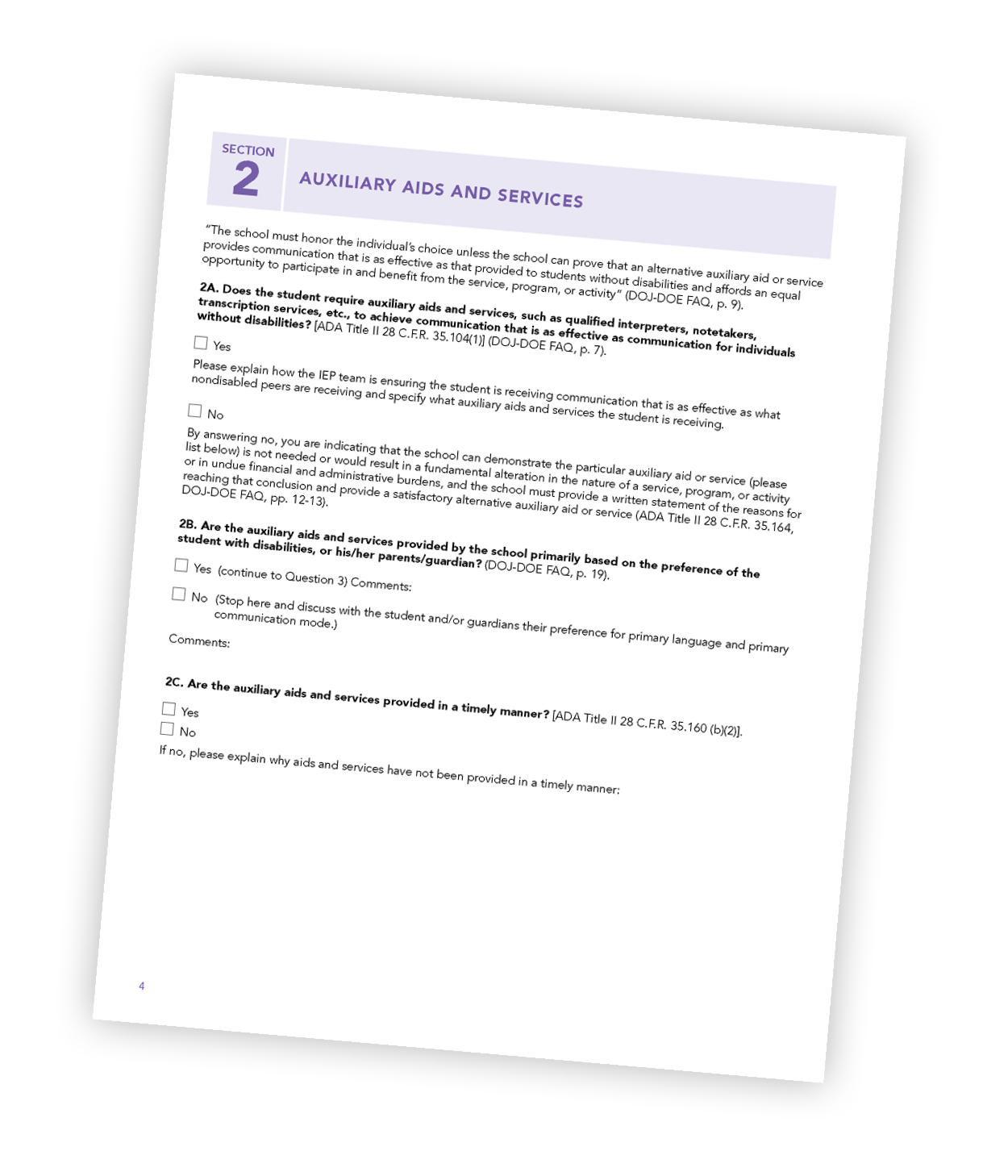Communication Planning Guide for Students Who Are Deaf or Hard of Hearing
Auxiliary Aids and Services
Video: Outreach - 06_Carrie
This video is being reviewed for audio description.
What is Audio Description?
When Audio Description (AD) is enabled, descriptive language narrates what is on the screen. To learn more, visit our accessibility webpage.
Video Player Help
Kaltura Video Hosting: This website uses Kaltura, a video hosting company, to serve video content. If you are having difficulty viewing videos on this site, it may mean that your location (e.g., school district, organization) is blocking or filtering the Kaltura website. Please contact your IT personnel to resolve this issue.
Accessibility: We strive to make this website accessible for all users, including people with disabilities. To learn more visit our accessibility webpage.
Captions / Transcript
After hitting play you can access an interactive transcript for this video by selecting the Show Transcript icon![]() in the top right corner of the video when you select play.
in the top right corner of the video when you select play.
You can turn on captions by selecting the Enable Captions icon![]() in the bottom right corner. Captions can also be turned on by selecting the Settings icon
in the bottom right corner. Captions can also be turned on by selecting the Settings icon![]() , where you can also set your caption preferences.
, where you can also set your caption preferences.
When available, you can use Spanish subtitles for this video by selecting Settings![]() and choosing Spanish in the Captions drop down menu.
and choosing Spanish in the Captions drop down menu.
Section 2
The purpose of this section is to help teams with decision-making to support student need for auxiliary aids. Auxiliary aids and services are items, equipment or services that assist in effective communication between a person who has a hearing, vision, or speech disability and a person who does not. These can include, but are not limited to: an interpreter, note takers, FM systems, AAC devices, etc.
When determining if auxiliary aids and services are necessary, the school must analyze the student’s needs and how to best meet those needs, while giving primary consideration to the specific request of the student or family. The type of auxiliary aids or services necessary to ensure effective communication will vary in accordance with the method of communication used by the individual; the nature, length, and complexity of the communication involved; and the context in which the communication is taking place.It is also important for IEP teams and families to recognize that a student’s preferences can change over time. The student and family’s preference should be discussed annually to incorporate any changes in hearing, amplification, or language development over the past year. Auxiliary aids and services may need to be provided to the student before completion of the IDEA evaluation process and eligibility determination in order to be considered timely (e.g., FM system, AAC devices).
It is important to note that ADA addresses requirements for auxiliary aids and services. Sign language interpreters are considered an auxiliary aid/service and are “qualified” based on meeting state requirements and their ability to effectively communicate information to their students.
As teams plan for auxiliary aids and services, ensuring access and engagement for a student across a school day, consider:
Sample Discussion Questions
- What auxiliary aids and services does the student require to be meaningfully included in his or her educational setting?
- What skills and training do related service providers possess to ensure they provide effective communication to students who are deaf or hard of hearing?
- Is the student’s notetaker (or other auxiliary service provider) trained and providing the same information that nondisabled peers are receiving?
